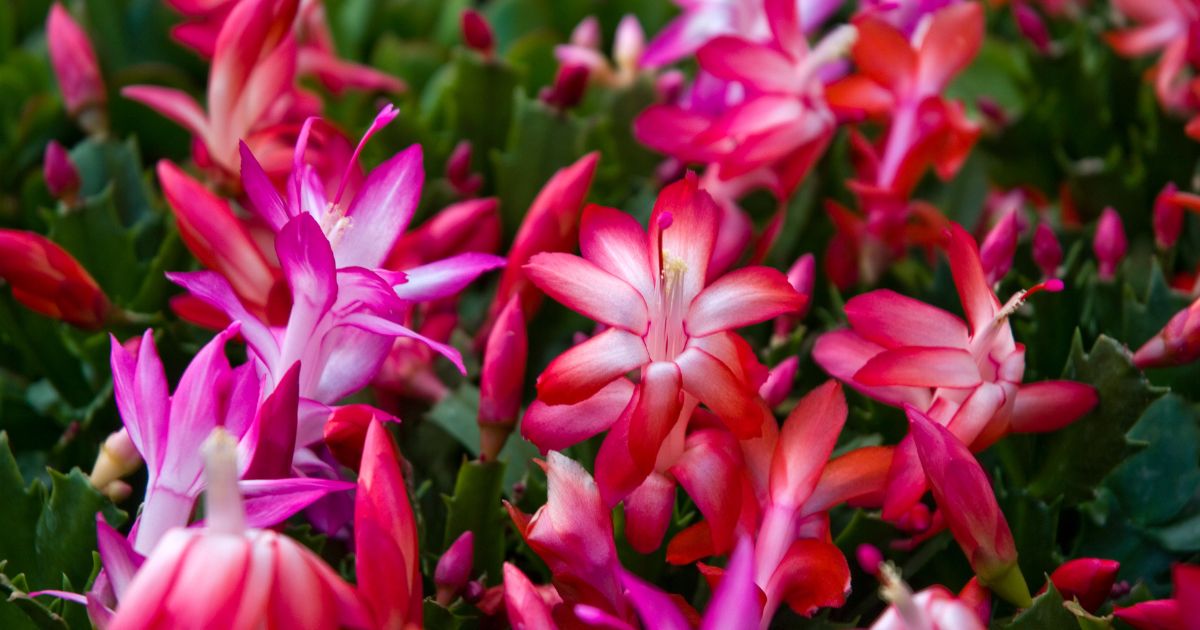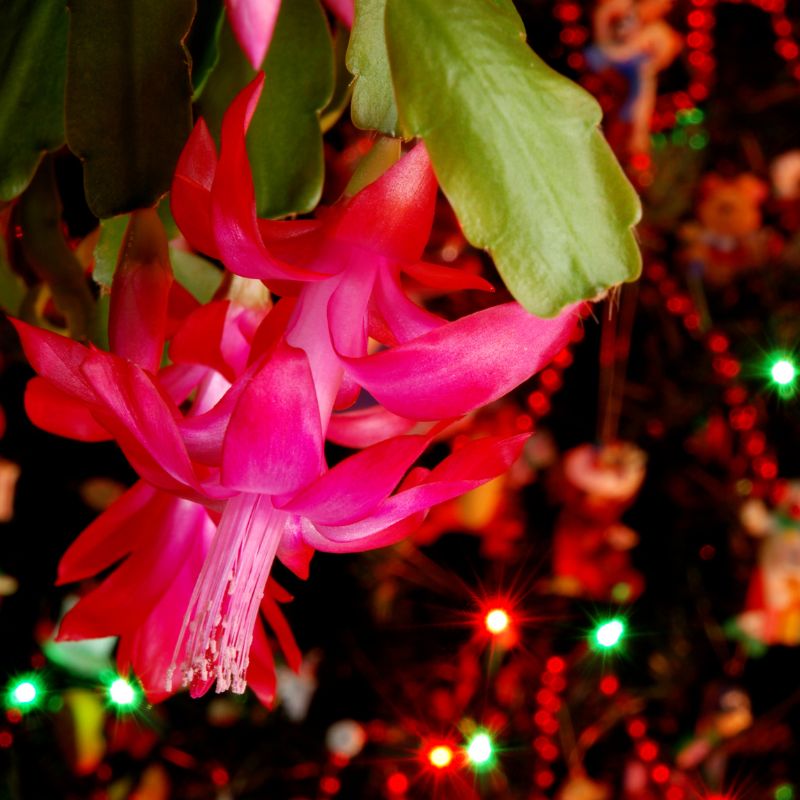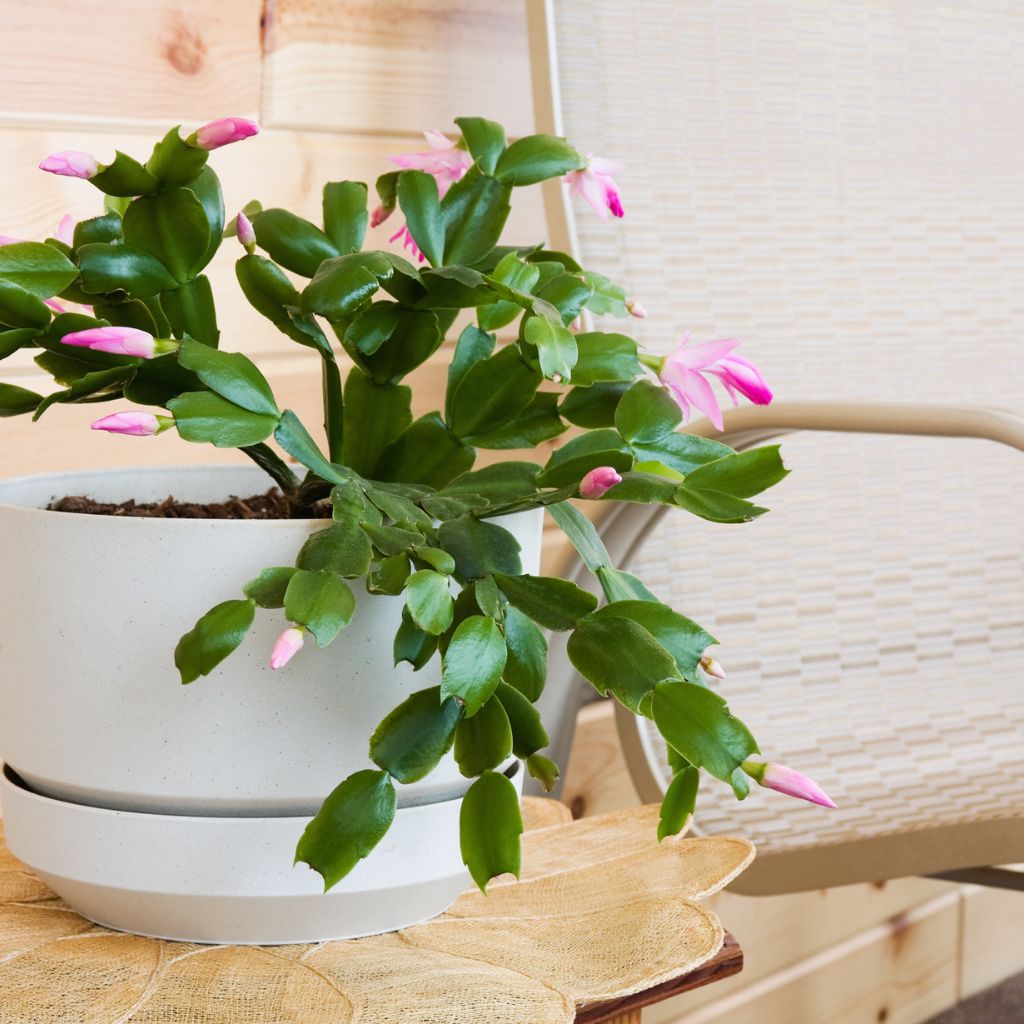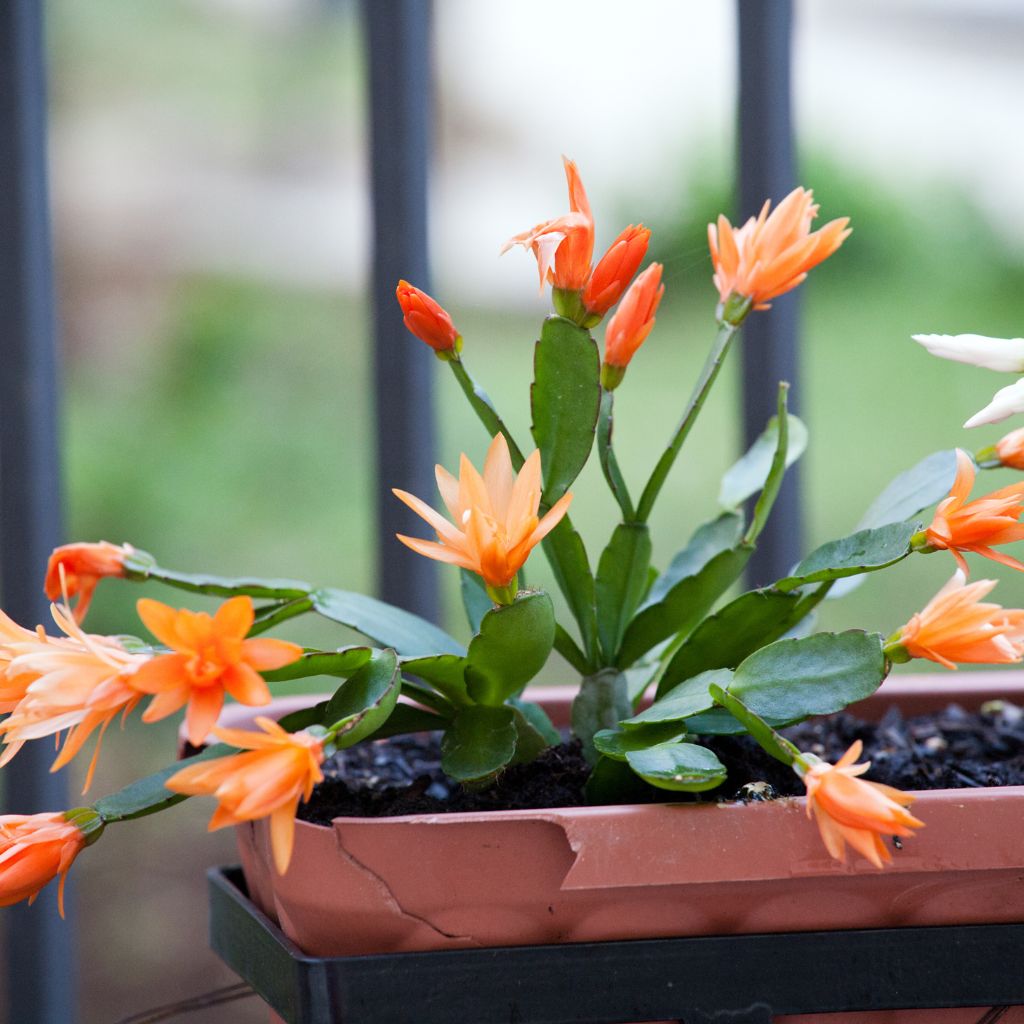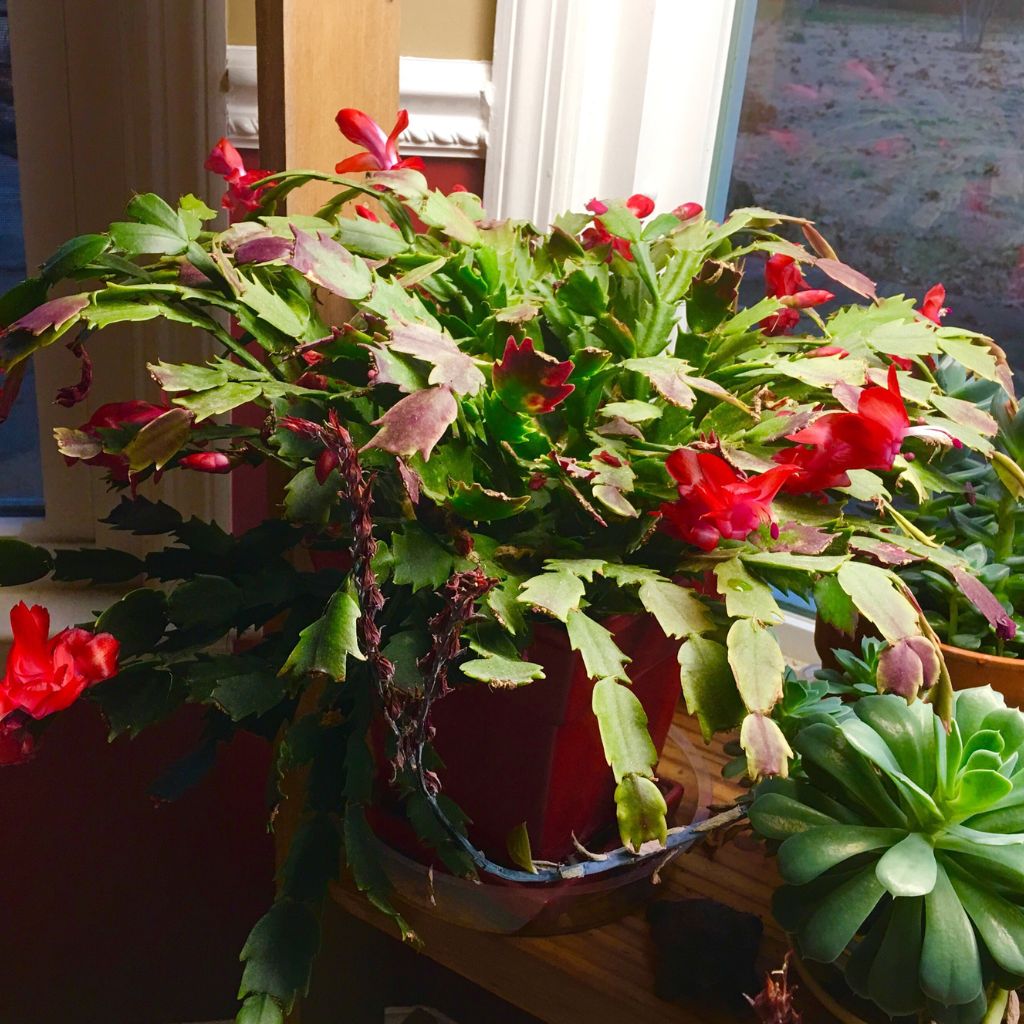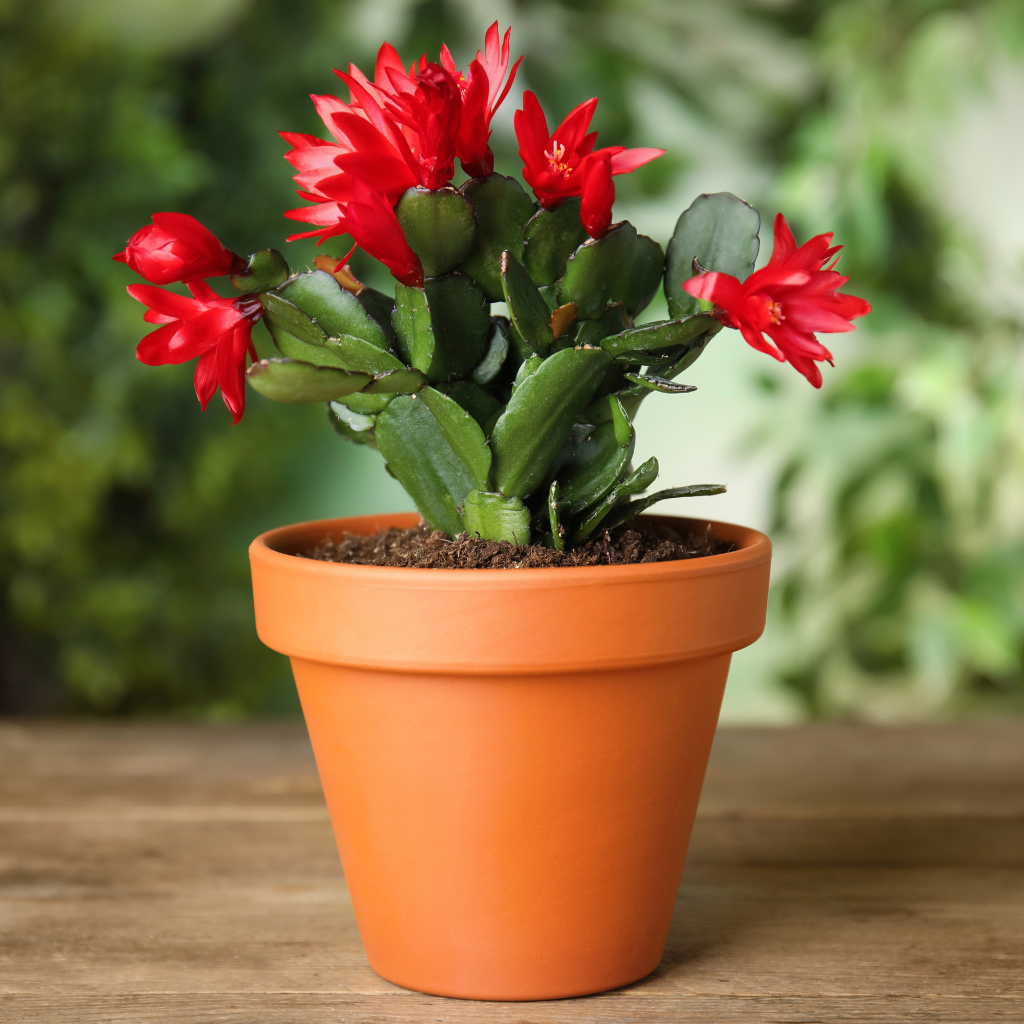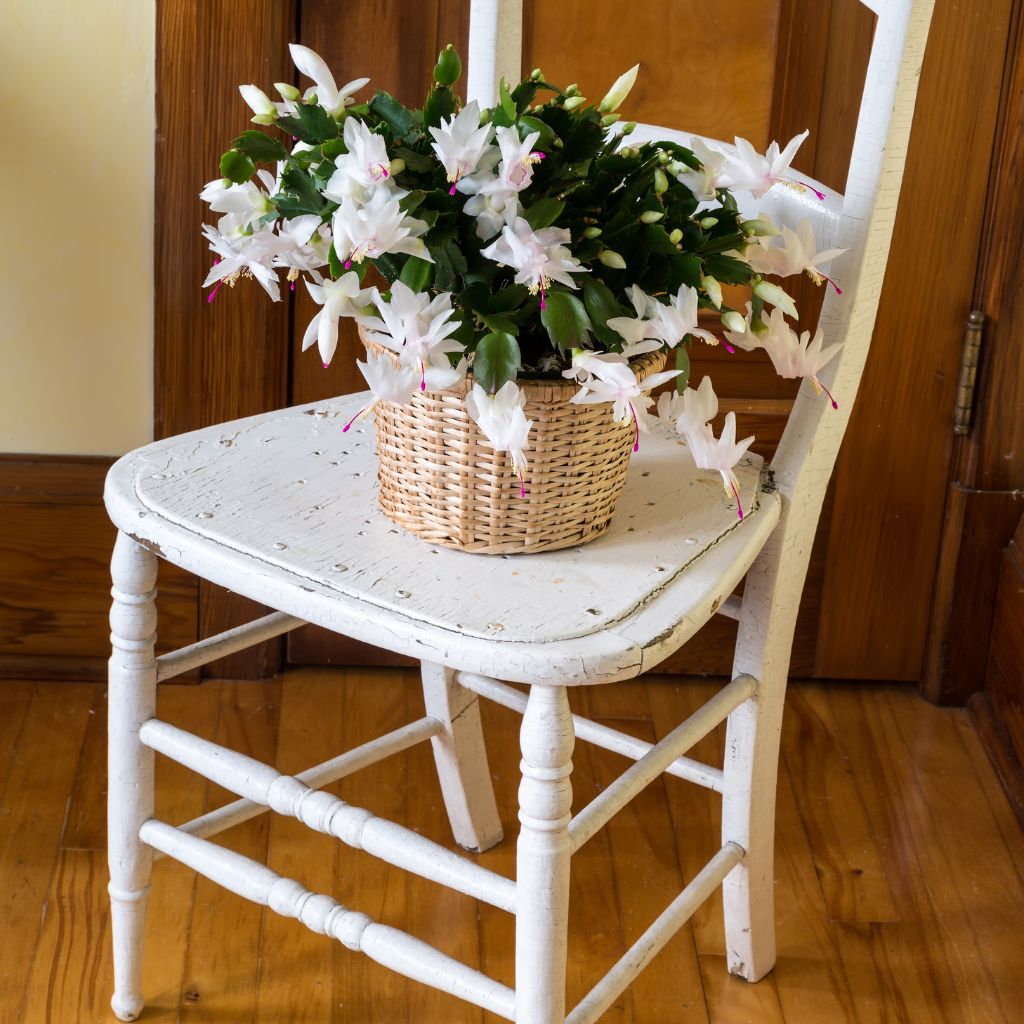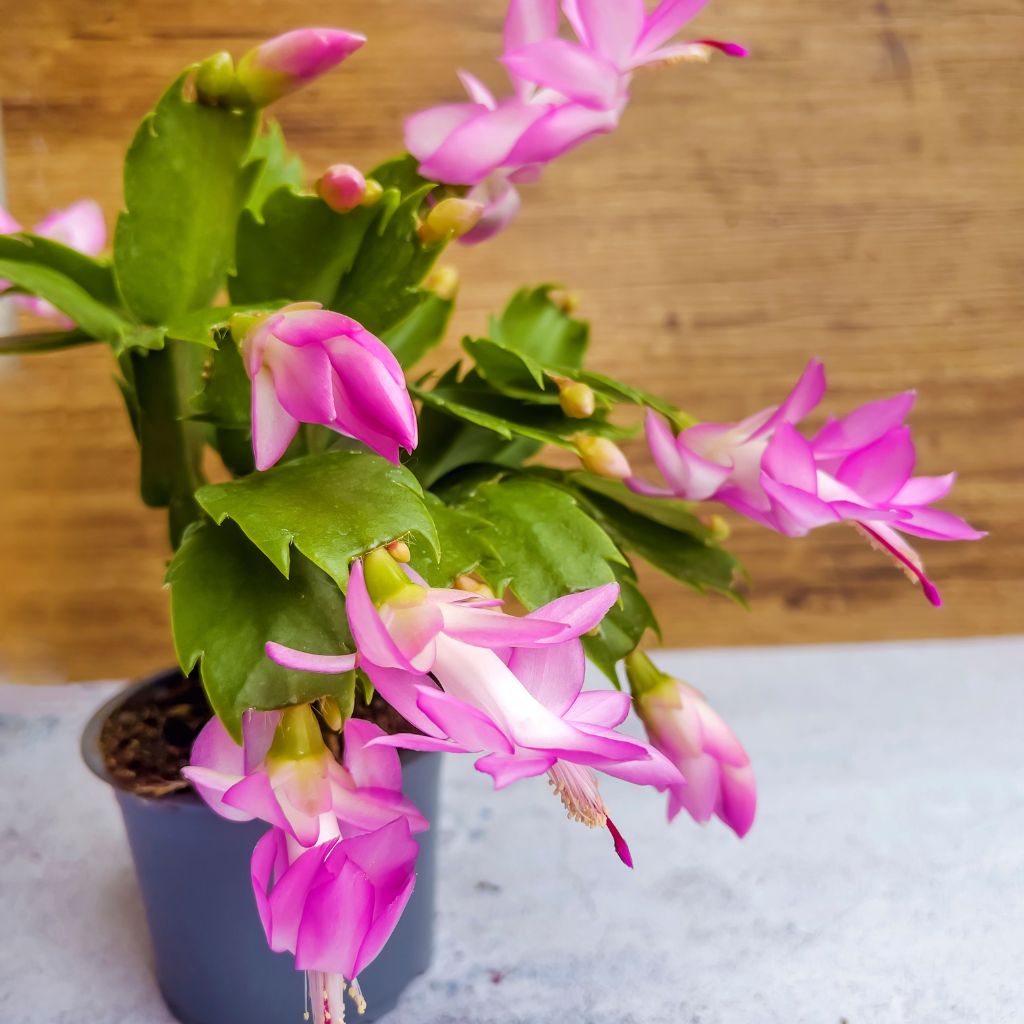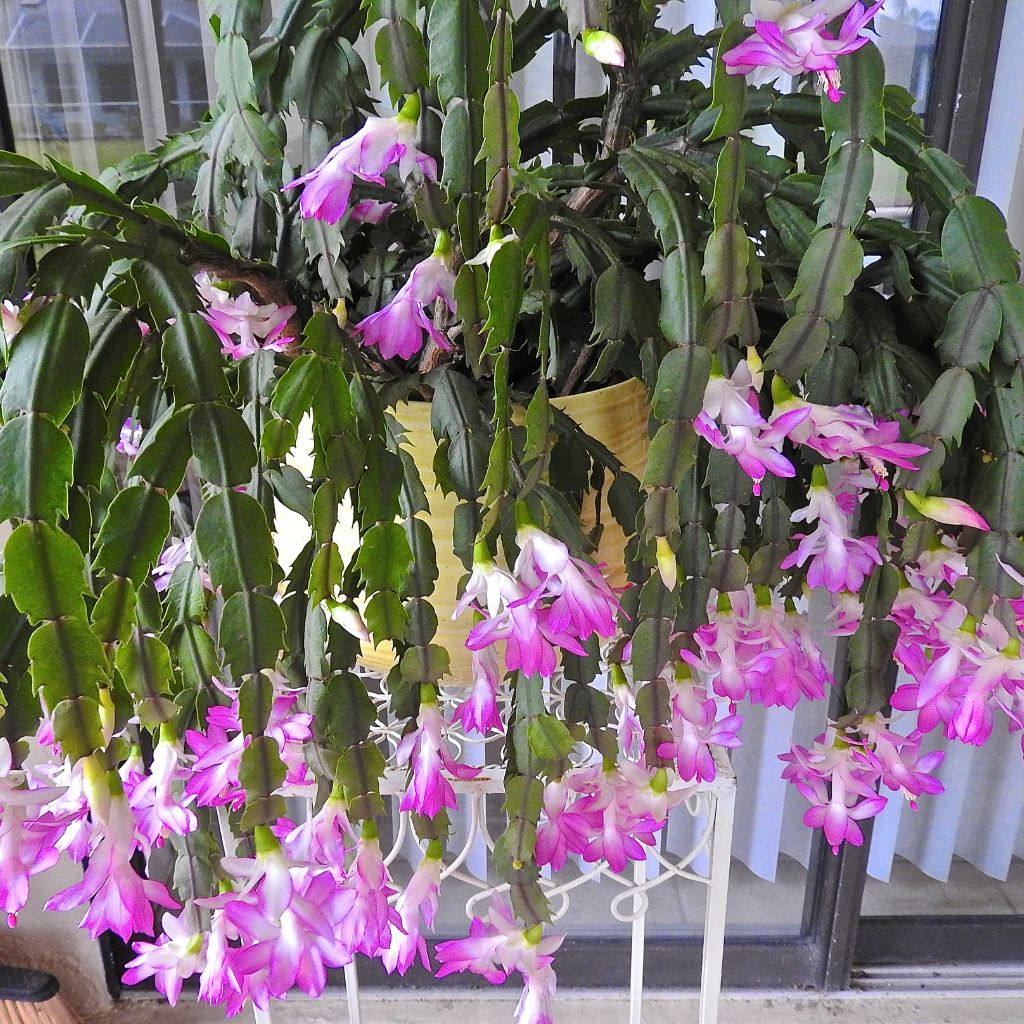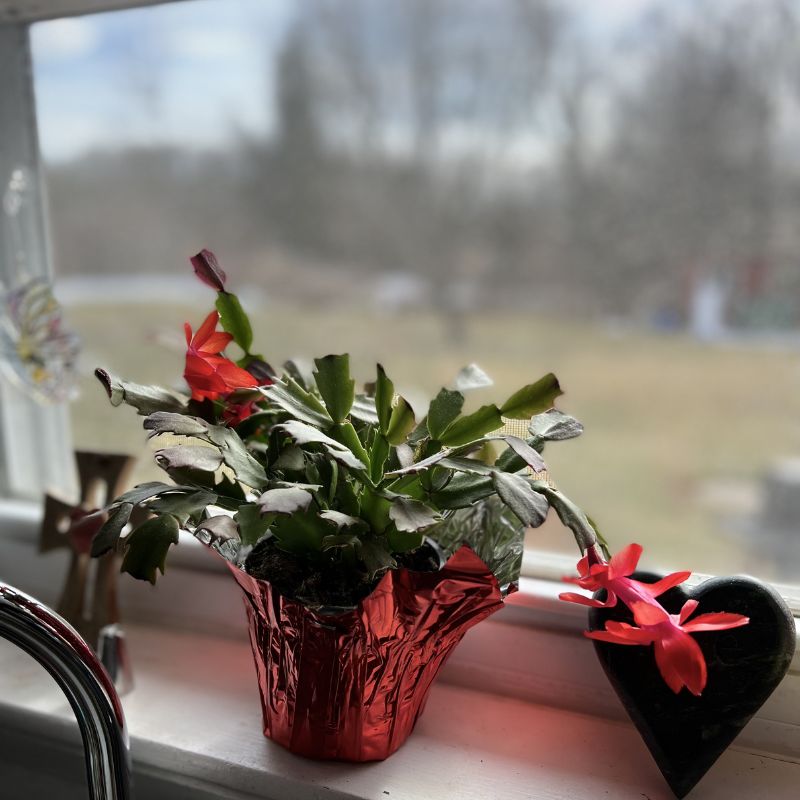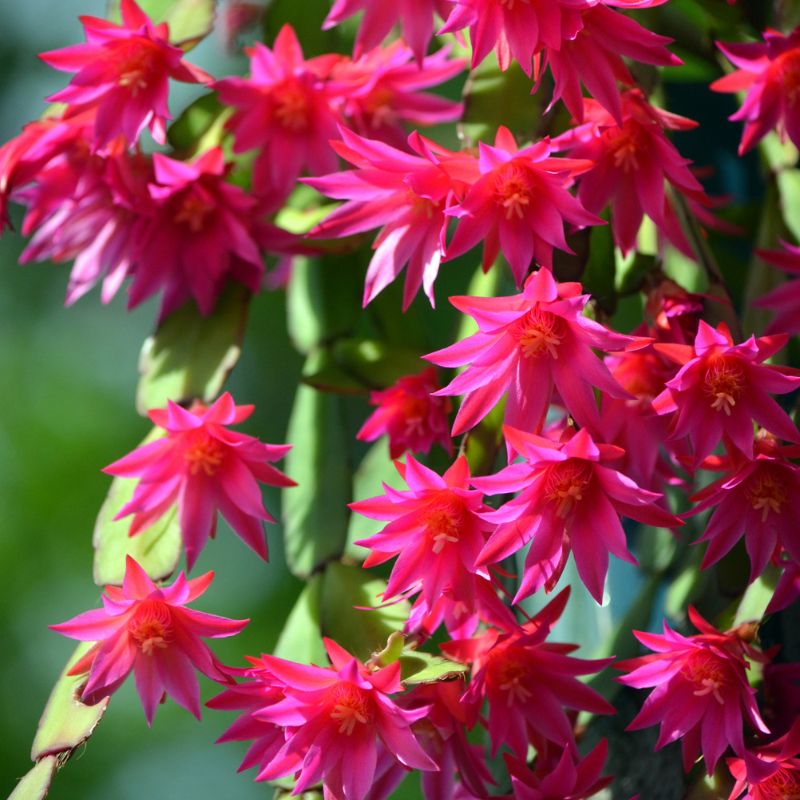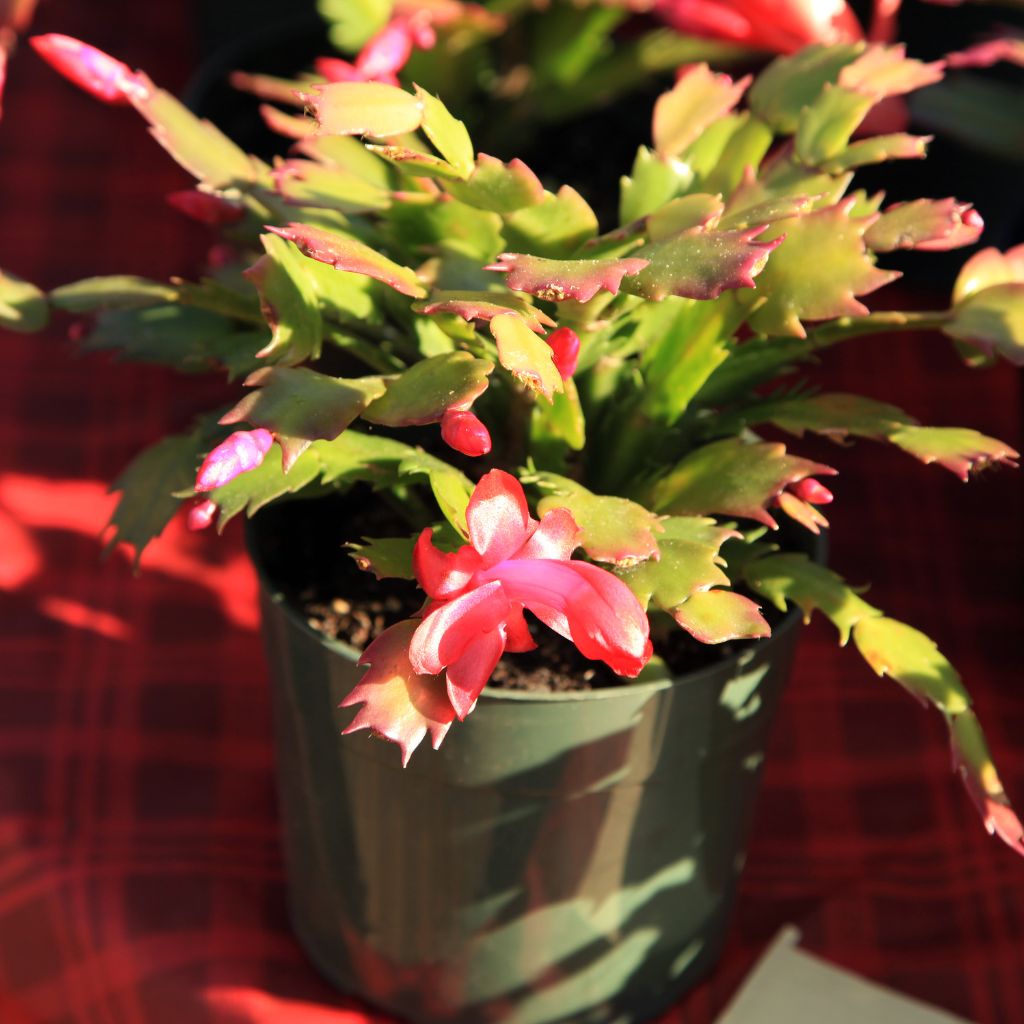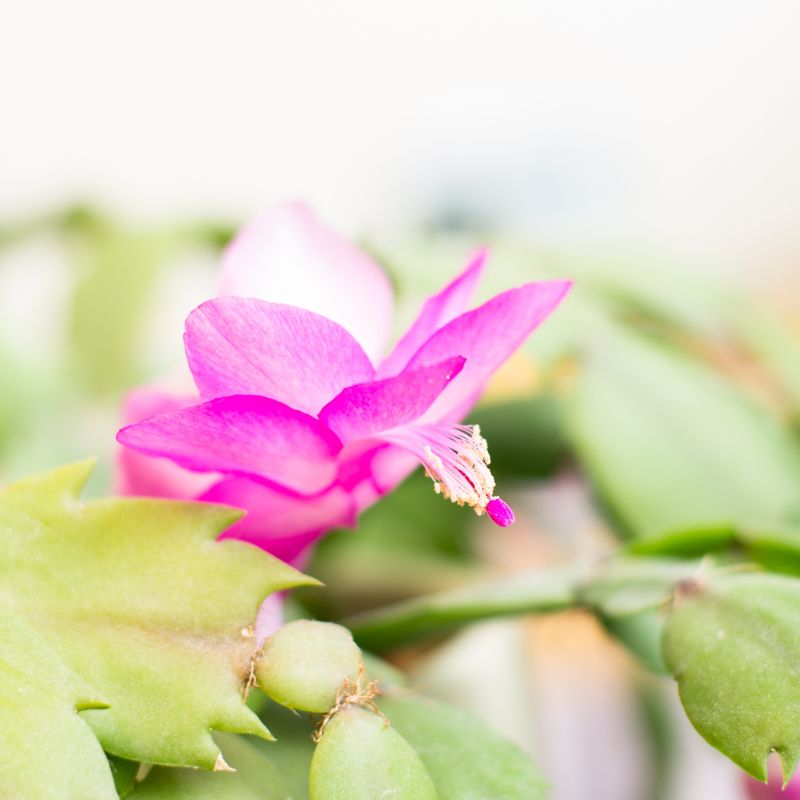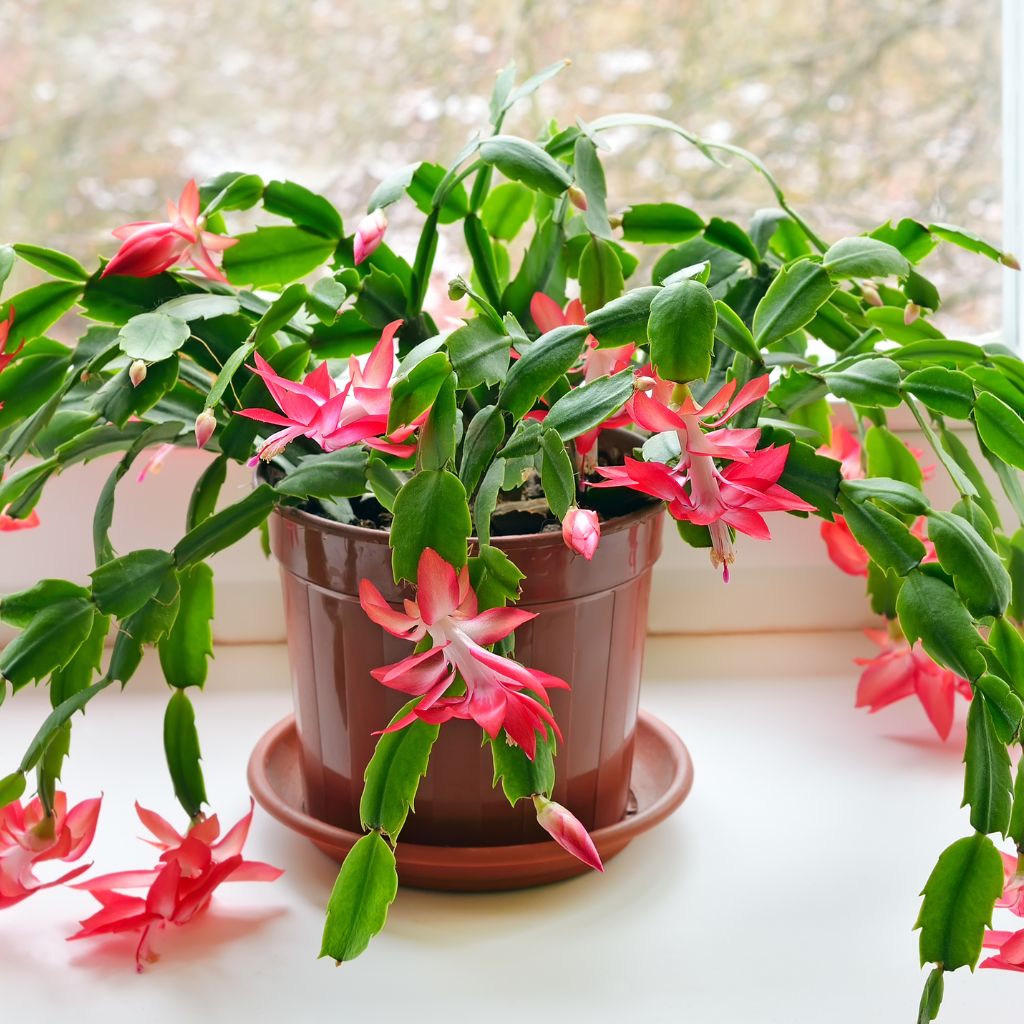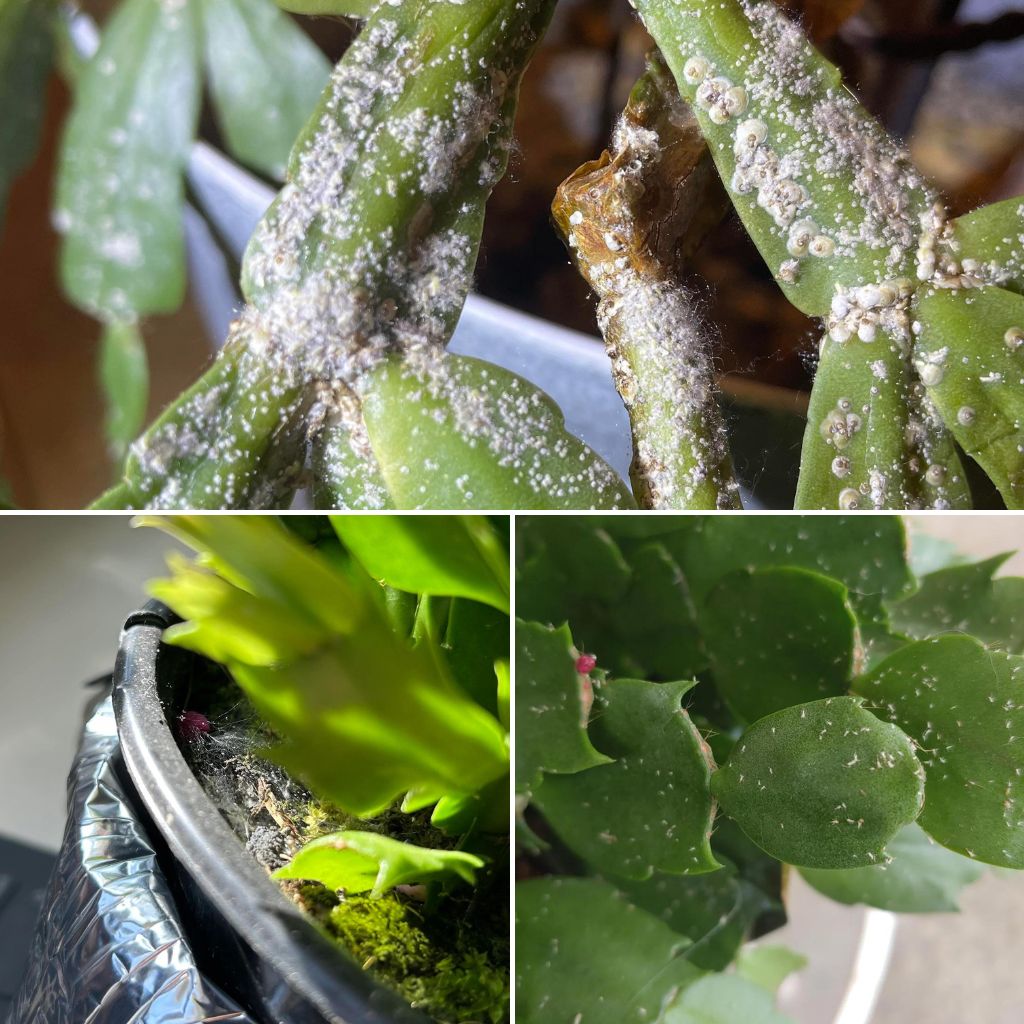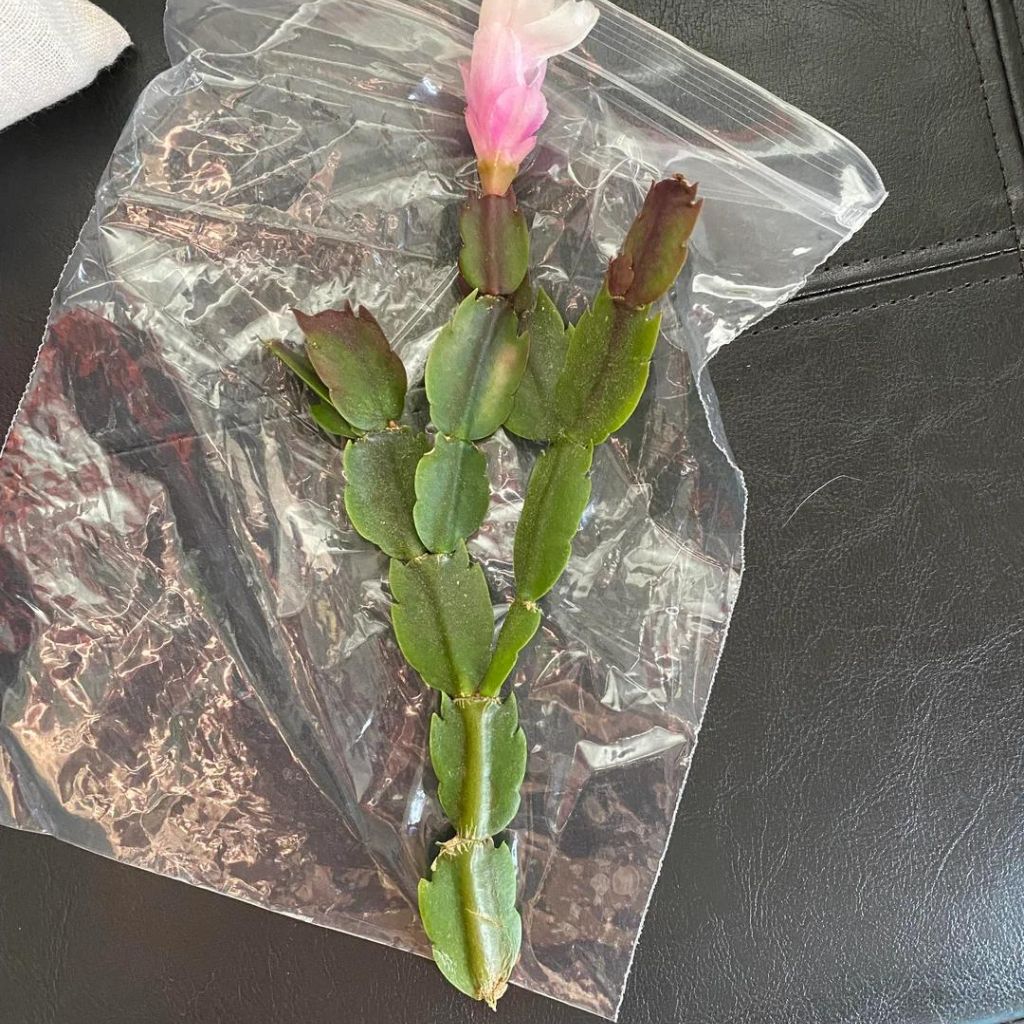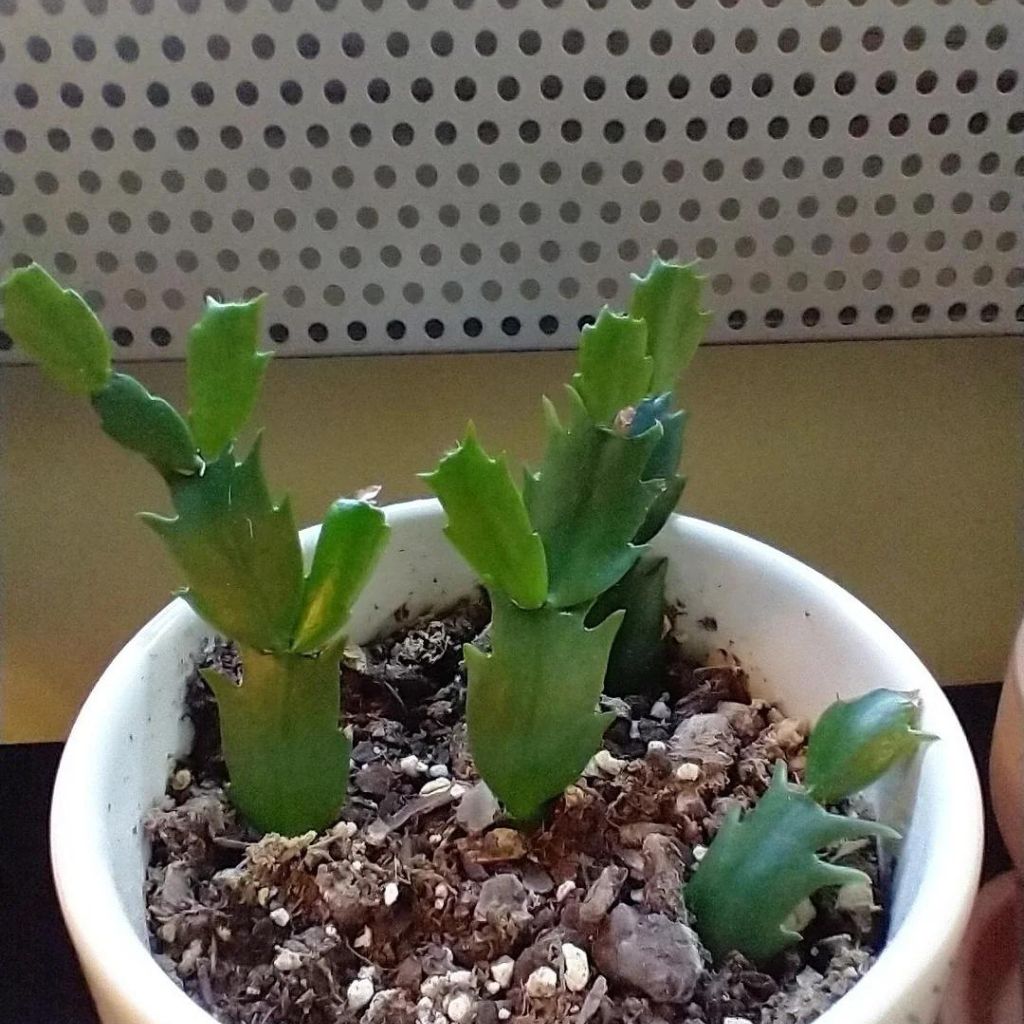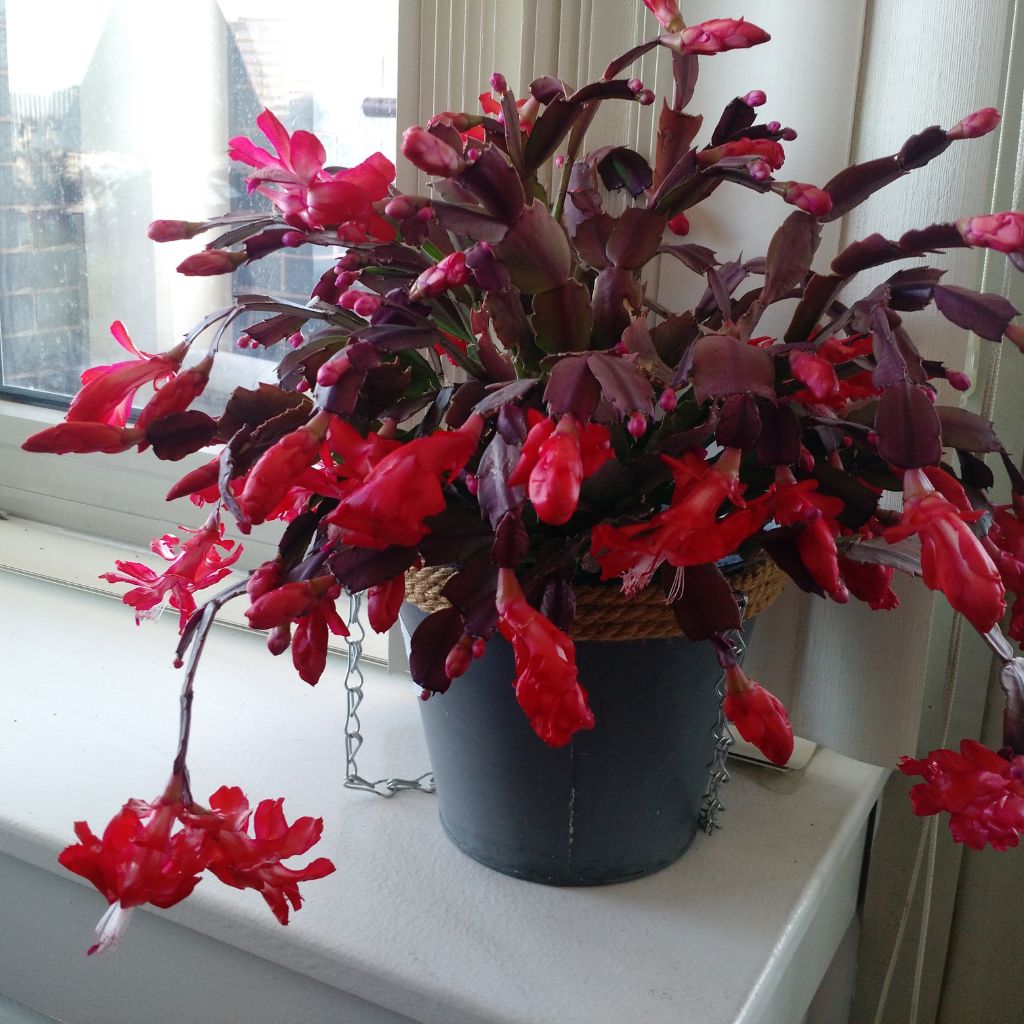Christmas cacti are treasured for their vibrant blooms that bring a touch of holiday cheer.
With a few simple adjustments, anyone can enjoy a stunning display of flowers during the festive season.
This plant thrives on a specific care routine.
Understanding the key factors can make all the difference in achieving a dazzling floral show.
Dive into the article to discover effective tips and tricks that will help make blooms a regular sight each holiday season.
The Magic of Holiday Blooms
Nothing captures the festive spirit quite like vibrant holiday plants, and the Christmas cactus tops the list with its stunning seasonal display. Its radiant blooms are a symbol of warmth and joy, brightening any room during the colder months.
Whether you’re a seasoned gardener or a plant novice, this enchanting cactus offers an opportunity to cultivate something truly special.
A little knowledge and attention can transform this plant into a centerpiece of holiday cheer, rewarding you with its colorful blossoms year after year.
Keep reading to uncover the secrets to unlocking the full beauty of your Christmas cactus and making it thrive throughout the seasons.
Understanding Your Christmas Cactus: Plant Overview
The Christmas cactus is a unique and vibrant houseplant treasured for its colorful blooms. By learning about its characteristics and blooming habits, one can provide better care and encourage prolific flowering.
The Christmas cactus, or Schlumbergera, differs from typical cacti. It features segmented stems with flat, leaf-like segments. The plant thrives in humid conditions, requiring less light than its desert relatives. It is native to tropical rainforests, where it grows under the canopy of trees.
These plants can reach up to 18 inches in height and spread about 24 inches wide. They come in various colors, including pink, purple, red, and white.
Blooming Habits
Christmas cacti are known for their stunning blooms during winter months, typically around December.
These blooms form in response to specific environmental conditions. Factors influencing blooming include light exposure, temperature, and watering schedule.
Optimal Growing Conditions: Light Requirements
Creating the right environment is essential for a Christmas cactus to thrive and produce beautiful blooms. Attention to light, temperature, humidity, soil, and water is crucial for encouraging flowering.
Christmas cacti prefer bright, indirect light. They can get some morning sun but should be shielded from harsh afternoon rays that can burn the leaves. A south or east-facing window is often ideal.
If natural light is limited, using grow lights can be beneficial. It’s important to rotate the plant occasionally to ensure even growth on all sides.
Too much darkness can lead to weak growth and fewer blossoms. Therefore, providing adequate light sets the foundation for healthy blooms.
Temperature and Humidity
The Christmas cactus thrives in temperatures ranging from 60°F to 70°F (15°C to 21°C) during the day. They enjoy cooler nights, ideally between 50°F and 60°F (10°C to 15°C).
Maintaining humidity is also key to plant health. This species prefers humidity levels around 30%-50%.
To boost humidity, placing a tray of water and pebbles under the pot can be effective. Regular misting can also help, especially in dry periods. Proper temperature and humidity create a comfortable environment for blooming.
Soil and Water Needs
Using a well-draining potting mix is essential. A combination of regular potting soil with perlite or coarse sand works well. This prevents root rot and allows for healthy root development.
Watering should be moderate—let the top inch of soil dry before watering again. Overwatering can lead to significant issues, so it’s better to err on the side of dryness during the blooming period.
During winter, when the cactus is in bloom, decrease watering slightly. By paying attention to soil quality and watering practices, vibrant blooms can be encouraged.
Caring for Your Plant Throughout the Year
Proper care throughout the year is essential for a healthy Christmas cactus. Each season brings distinct needs, from watering and light exposure to fertilizing and temperature management. Understanding these will help maintain the plant’s health and encourage blooming.
Spring and Summer Care
During spring and summer, the Christmas cactus thrives with bright indirect light. She should be placed near a window but out of direct sunlight to prevent leaf burn.
Watering should occur when the top inch of soil feels dry. This can be about once a week, depending on the humidity and temperature. It’s crucial not to let the plant sit in water, as this can lead to root rot.
Fertilization is beneficial during these months. Using a balanced liquid fertilizer every two to four weeks will support healthy growth. Additionally, repotting is ideal at this time if the roots are crowded.
Autumn Preparations
As autumn approaches, it’s time to prepare the Christmas cactus for blooming. Lowering the temperature to around 50-60°F (10-15°C) can encourage the formation of flower buds.
Reduce watering frequency, allowing the soil to dry slightly between waterings. This signals to the plant that winter is approaching.
In late autumn, moving the cactus to a slightly darker location can also be helpful. This mimics the plant’s natural environment, promoting bud development.
Winter Maintenance
In winter, the Christmas cactus requires special attention. It thrives in cool temperatures, ideally around 60°F (15°C) during the night.
Watering should be minimal; only when the top soil feels dry. Overwatering during this period can hinder blooming and cause damage.
She also benefits from increased humidity. A pebble tray with water or regular misting can provide the moisture it needs.
Avoid moving the plant too much, as changes can cause bud drop. With proper care, the plant will be ready to bloom beautifully come holiday season.
Encouraging Bloom: Light Conditions
To encourage a Christmas cactus to bloom, proper care is essential. This plant thrives with specific environmental conditions.
Bright Indirect Light: It prefers bright, indirect sunlight. Too much direct sunlight can harm it.
Temperature
Cool Temperatures: Lower temperatures (around 60-70°F or 15-21°C) promote flowering. Avoid placing it in drafts.
Watering Practices
Water Sparingly: During the growing season, water the cactus regularly but allow the soil to dry between waterings.
Fertilization
Use a Balanced Fertilizer: Use a balanced, water-soluble fertilizer every month during the growing season. This provides necessary nutrients.
Dormancy Period
Induce Dormancy: To stimulate blooming, provide a dormancy period. Reduce watering and keep the plant in a cooler, darker spot for about six weeks.
Encourage Flower Buds
Timing is Key: After the dormancy period, return it to bright light and increase watering to encourage buds.
With these simple practices, a Christmas cactus can bring vibrant blooms each holiday season. Consistency in care will yield the best results.
Budding and Flowering Tips
To encourage a Christmas cactus to bloom effectively, attention to fertilization and proper pruning is essential. These practices significantly impact bud formation and the overall health of the plant.
Fertilization Schedule
A consistent fertilization schedule is vital for promoting blooms. During the growing season, from spring to early summer, use a balanced liquid fertilizer with an NPK ratio of 20-20-20.
Frequency: Fertilize every 4-6 weeks.
Dilution: Mix the fertilizer at half the recommended strength to avoid over-fertilization.
As fall approaches, reduce or stop fertilizing to help the plant prepare for its blooming period. The right nutrients in the correct time frame can support the development of vibrant flowers.
Pruning and Shaping
Pruning is important for shaping the plant and encouraging blooming. After the flowering period, typically in late winter or early spring, prune back about one-third of the stems.
Technique: Use clean, sharp scissors or pruning shears to make clean cuts.
Timing: Prune before new growth starts for the best results.
This process not only helps manage the size of the cactus but also promotes fuller and healthier blooms. Proper pruning can lead to a bushier plant that’s more likely to produce flowers.
Troubleshooting Common Issues: Pest Problems
Maintaining a healthy Christmas cactus requires attention to potential problems that may arise. Pests and diseases can threaten its vitality. Recognizing and addressing these issues promptly is essential.
Common pests that affect Christmas cacti include mealybugs, spider mites, and aphids. These insects can sap the plant’s strength, leading to poor growth and fewer blooms.
Signs of Pest Infestation:
Visible pests: Small, white cottony masses (mealybugs).
Webbing: Thin, silk-like threads (spider mites).
Sticky residue: A shiny coating on leaves (aphids).
To manage pests, inspect plants regularly. If an infestation is found, treat it with insecticidal soap or neem oil. Ensure thorough coverage on both the upper and lower leaf surfaces. Regularly wiping leaves with a damp cloth can also help keep pests at bay.
Disease Management
Certain diseases can plague Christmas cacti, particularly root rot and fungal infections. These typically result from overwatering or poor drainage.
Symptoms of Common Diseases:
Root Rot: Yellowing leaves and mushy roots.
Fungal Infections: Brown spots or mold on leaves.
To tackle root rot, reduce watering frequency and improve drainage by repotting in fresh, well-draining soil. For fungal issues, removing affected leaves and applying a fungicide can help restore plant health.
Maintaining proper watering practices is essential to prevent future occurrences.
Propagation Techniques: Cuttings Method
Propagation of Christmas cacti can be a rewarding way to expand a collection. Two effective methods include using cuttings and careful potting practices that ensure healthy growth.
The cuttings method is a simple and effective way to propagate a Christmas cactus. To begin, choose a healthy stem with at least two to three segments. Using clean, sharp scissors or pruning shears, make a clean cut.
After cutting, allow the stem to dry for about 24 hours. This helps to form a callus, preventing rot.
Next, place the callused cutting in a well-draining soil mix, ideally one designed for cacti. Water lightly and place the pot in a warm, indirect light location.
Regular watering is important, but make sure not to overwater, as this can lead to root rot. Roots should develop within a few weeks.
Potting and Repotting
Proper potting is crucial for a thriving Christmas cactus. Start with a pot that has drainage holes to prevent water accumulation.
Use a cactus or succulent potting mix, or create a mix using equal parts potting soil, coarse sand, and perlite. This ensures excellent drainage, which is essential for the plant’s health.
When potting, bury the cutting just deep enough to support it, typically covering about one segment.
Repotting should occur every 2-3 years or when the roots outgrow the pot. Choose a slightly larger pot each time.
Always be gentle with the roots during this process, as damage can hinder growth.
Celebrating Your Blooming Christmas Cactus
Seeing a Christmas cactus bloom is a delightful event for any plant lover. Each flower can bring a burst of color and joy to a home during the holiday season.
To celebrate, consider displaying the plant in a prominent location. A well-lit shelf or a dining table can be ideal spots. This allows guests to admire its beauty too.
A few ways to enhance the celebration include:
Use Decorative Pots: Choose festive pots that complement the blooms.
Create a Floral Arrangement: Place the cactus among other seasonal plants or flowers for a vibrant display.
Share with Friends: Gift a cutting or a bloom to friends and family to spread the joy.
Encouragement of blooming can also inspire traditions. Families can gather around the cactus each year, taking pictures or sharing stories about its growth.
Consider keeping a journal to document the cactus’s progress and each blooming cycle. This creates lasting memories and can become a cherished activity over time.
Finally, lighting candles or enjoying hot beverages while admiring the cactus can add to the festive spirit. Celebrating this special plant can create wonderful moments during the holiday season.
